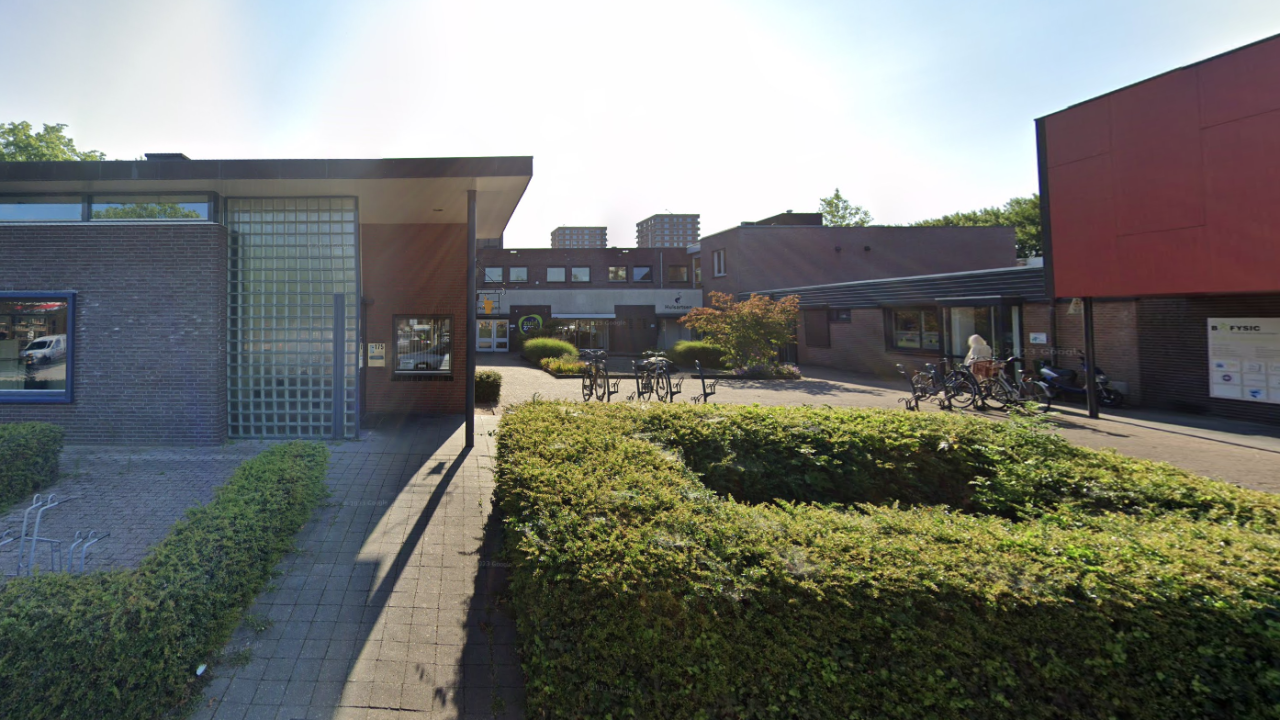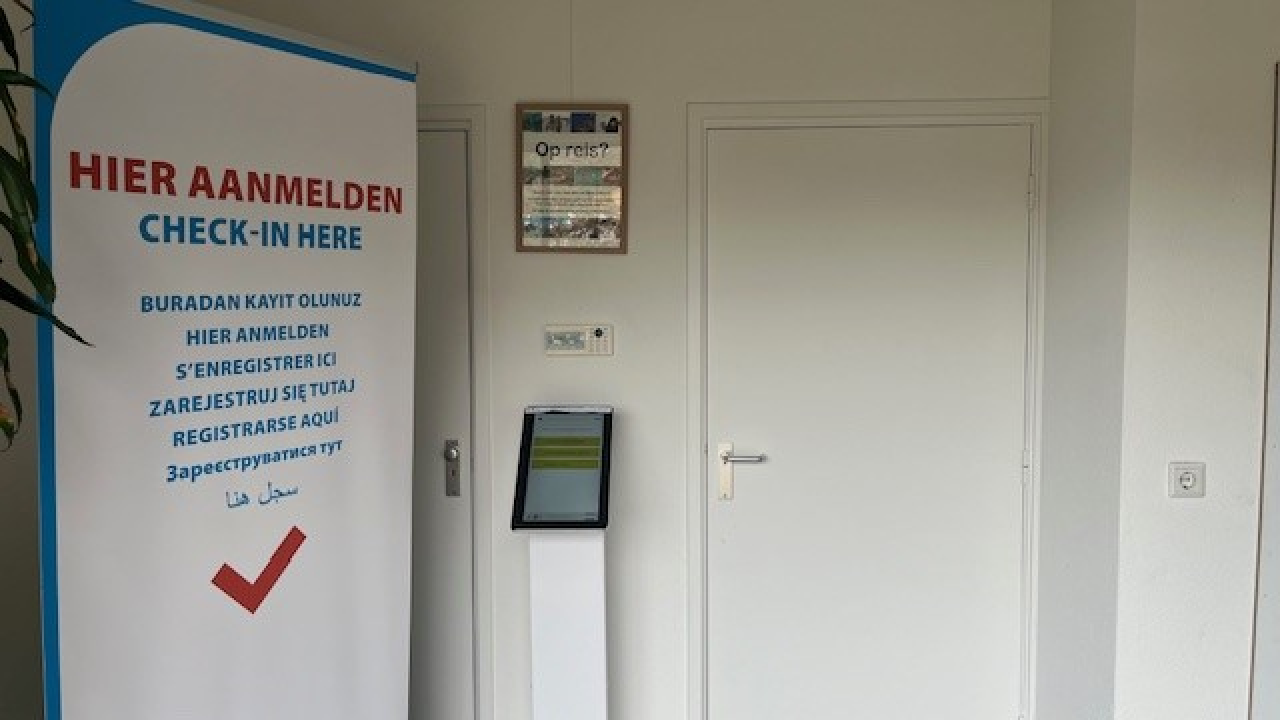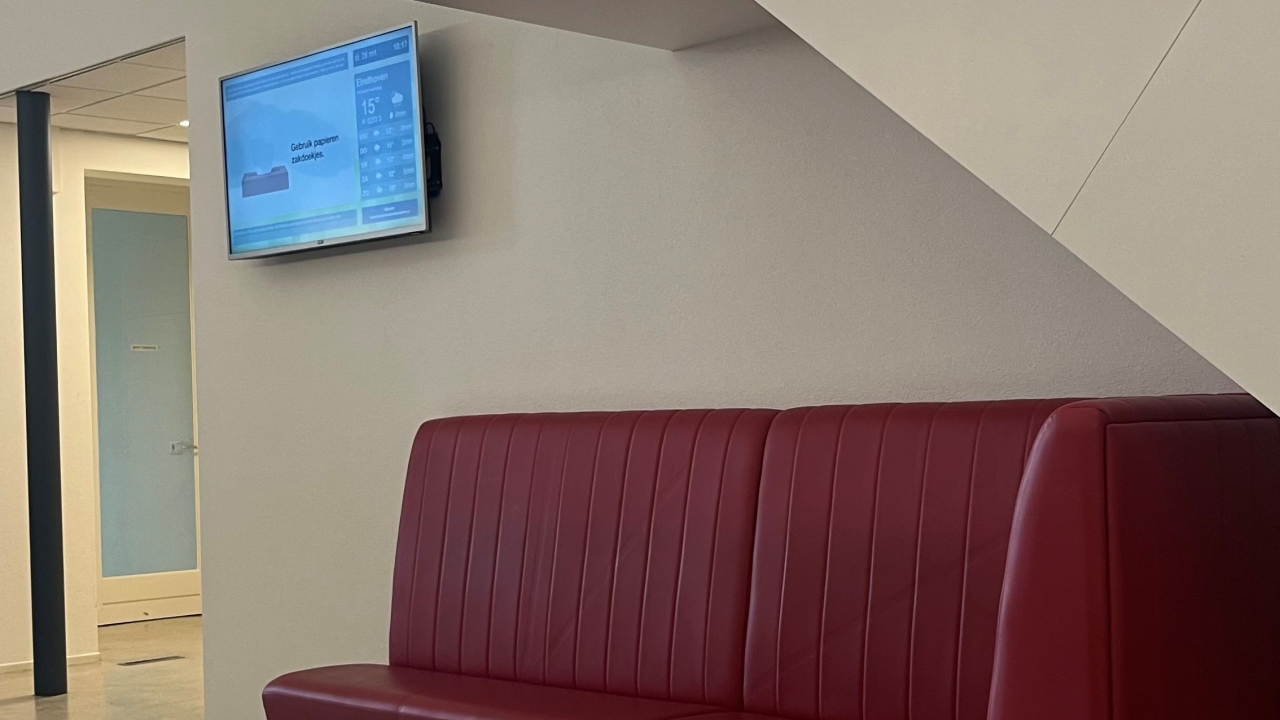General Practice Kastelenplein
Registration kiosk helps to cope with staff shortages
General Practice Kastelenplein is located in Eindhoven, specifically in the 'Gestel' district. The practice includes various disciplines and a team comprising 6 general practitioners, a nurse practitioner, a physician assistant, assistants, chronic care support staff, mental health care support staff for adults/youth, and a practice manager. Additionally, they offer services from a dietitian, podiatrist, midwife, and "Wij Eindhoven."
Coping with staff shortages
It is a well-known fact that staff shortages in healthcare are increasing. General Practice Kastelenplein is also experiencing the effects of this. Karin van Rhee, the practice manager, states: “We notice it is becoming increasingly difficult to find staff. We also face challenges when a colleague is sick. This was partly why we decided to participate in a pilot project set up by our healthcare group.”
Wachtkamerschermen® and healthcare group STROOMZ initiated a pilot for the check-in system. A check-in kiosk was installed at three practices, including Kastelenplein. Baseline and final measurements were conducted to assess the effectiveness of the kiosk.
Taking away the pressure at the front desk
Karin explains that besides addressing staff shortages and sick colleagues, there was another significant reason for participating in the pilot: “It was always very busy at the reception. Patients came to ask questions, make appointments, check in, and so on. Additionally, patients came to the desk for appointments with other disciplines, which we could not assist with. We wanted to reduce the reception's workload, and a check-in kiosk seemed to be the solution.”
The pilot has now been successfully completed. Measurements showed that the reception desk's workload was reduced by approximately 60%. The total duration of contact moments at the desk decreased by as much as 78%. Nearly all patients now check in using the kiosk, even for appointments with other disciplines, where they are directed to the appropriate waiting room without being formally checked in.
The practice has expressed a wish for the future. Sometimes healthcare providers change rooms, moving from upstairs to downstairs, for instance. During such times, assistants must manually adjust the confirmation text on the kiosk to direct patients to the correct waiting room. The practice hopes this can be automated, possibly through the schedule. Wachtkamerschermen® has already addressed this with the HIS supplier.
Additionally, it would be beneficial if the kiosk could immediately notify patients if a doctor is out on an emergency visit, indicating a longer wait time, in conjunction with the waiting room screens.
Benefits for the patient
Karin mentions that the general practitioners also see benefits from the kiosk: “Now doctors know if a patient is present or not. Sometimes they had to search for a patient or call them multiple times. The patient could be in the wrong waiting area or not arrived yet. Now, doctors have an overview of the present patients and know which waiting room to call them from. This saves a lot of time!”
Besides the advantages for assistants and doctors, Karin highlights benefits for patients: “During the 'corona period,' patients got used to not checking in at the desk. Now, with the kiosk, patients save time as they no longer have to wait in line. It also improves patient privacy since they don’t have to announce their name and birth date out loud, which is a nice side benefit of the kiosk.” Additionally, Karin notes that the kiosk clearly communicates which waiting room the patient should go to, which is convenient for both patients and doctors, as it eliminates the need to search for the patient.
Flexible opening of the front desk
The implementation of the check-in system allows the practice to flexibly open and close the reception desk. According to Karin, this is very convenient: “On days when we are understaffed, closing the reception desk is a real relief. If the desk is closed, patients can still approach a staff member if needed. For instance, if there are issues with checking in, we can quickly see what the problem is.” However, to effectively reduce desk workload, Karin offers a tip: “It is important for the entire team to follow the same procedures. If the desk is closed and a patient approaches us for a new appointment, we direct them to the website or app. Patients may not always like this, but it helps reduce ‘interruptions.’ The general practitioners also direct patients to the website or app when the desk is closed. By maintaining consistent procedures, patients know what to expect.”

 English
English  Nederlands
Nederlands 


